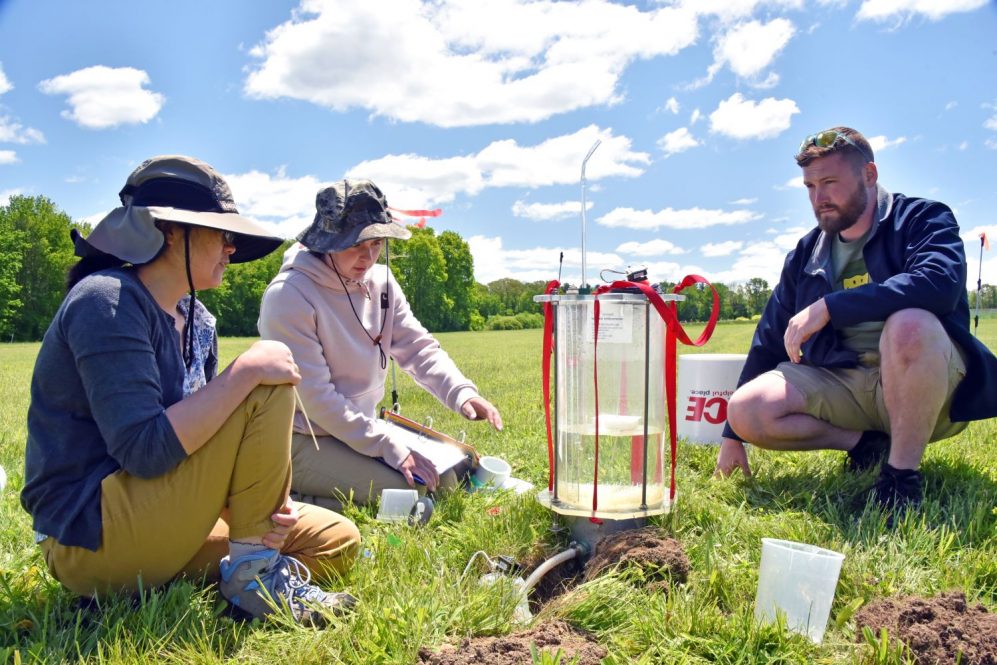Monique Michaud ‘23 (CAHNR) has a passion for soil science. From providing the food we need to mitigating climate change, soil sustains life. Without it, she says, we would not survive.
“In our ever-changing environment,” Michaud explains, “soil is a critical resource, which is why discovering new information is so crucial.”
Michaud, from Tolland, Connecticut, graduated this spring with a bachelor’s degree in sustainable plant and soil systems and a minor in agricultural learning and outreach. This summer, she is beginning her master’s degree in soil science at UConn. Her long-term goal is to pursue a career as a soil scientist and conservationist with U.S. Department of Agriculture Natural Resources Conservation Service (USDA NRCS), which she describes as the most rewarding, and coolest job out there.
Michaud began her research journey during her freshman year, when she joined the Guillard lab in the Department of Plant Science and Landscape Architecture. From this experience, she gained extensive knowledge of agronomy, soil sciences, and the process of conducting research.
“I loved the lab and research so much that I decided to stay on as a master’s student working under assistant research professor Huijie Gan after I graduated this past May.”
“UConn truly has provided me with so many amazing research and career development opportunities in plant and soil science,” she says. “I am so happy to be continuing here for the next couple of years.”
This summer, Michaud is working on quantifying saturated hydraulic conductivity for soil health assessments and climate change adaptation.
“Saturated hydraulic conductivity or KSat, is essentially the infiltration rate of the soil once the ground has reached 100% saturation,” says Michaud. “KSat is a very important soil health indicator and can give lots of insight into many soil and hydraulic properties.”
However, Michaud explains that one of the issues surrounding this measurement is that there isn’t a standard method of collecting related data. Each method or instrument is different and hasn’t been widely tested.
To tackle this, Michaud is joining forces with USDA NRCS. She is using five different methods to obtain KSat measurements across three different field sites. This preliminary test will help to compare efficiency and differences in data.
Additionally, USDA NRCS has an important tool called the web soil survey. Growers nationwide use the web soil survey to provide detailed soil information. Michaud’s study will validate the information provided by the web soil survey. After this initial method comparison, Michaud will also take KSat measurements from different soil series located around the state.
“In short, this project is helping to get more accurate soil information to the public. That will be a key component in standardizing the collection of accurate soil data for soil scientists nationwide.”
This work relates to CAHNR’s Strategic Vision area focused on Ensuring a Vibrant and Sustainable Agricultural Industry and Food Supply.
Follow UConn CAHNR on social media



